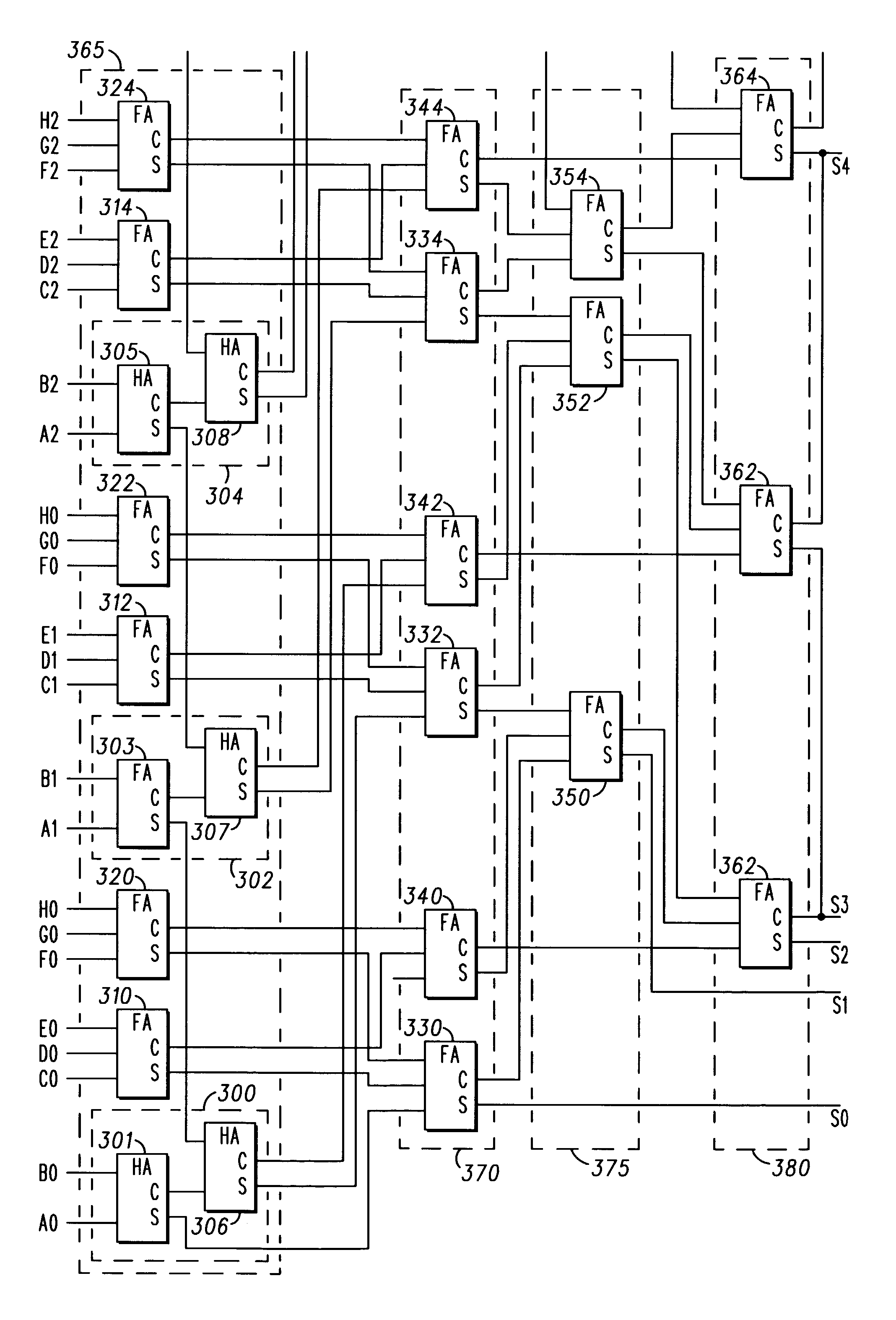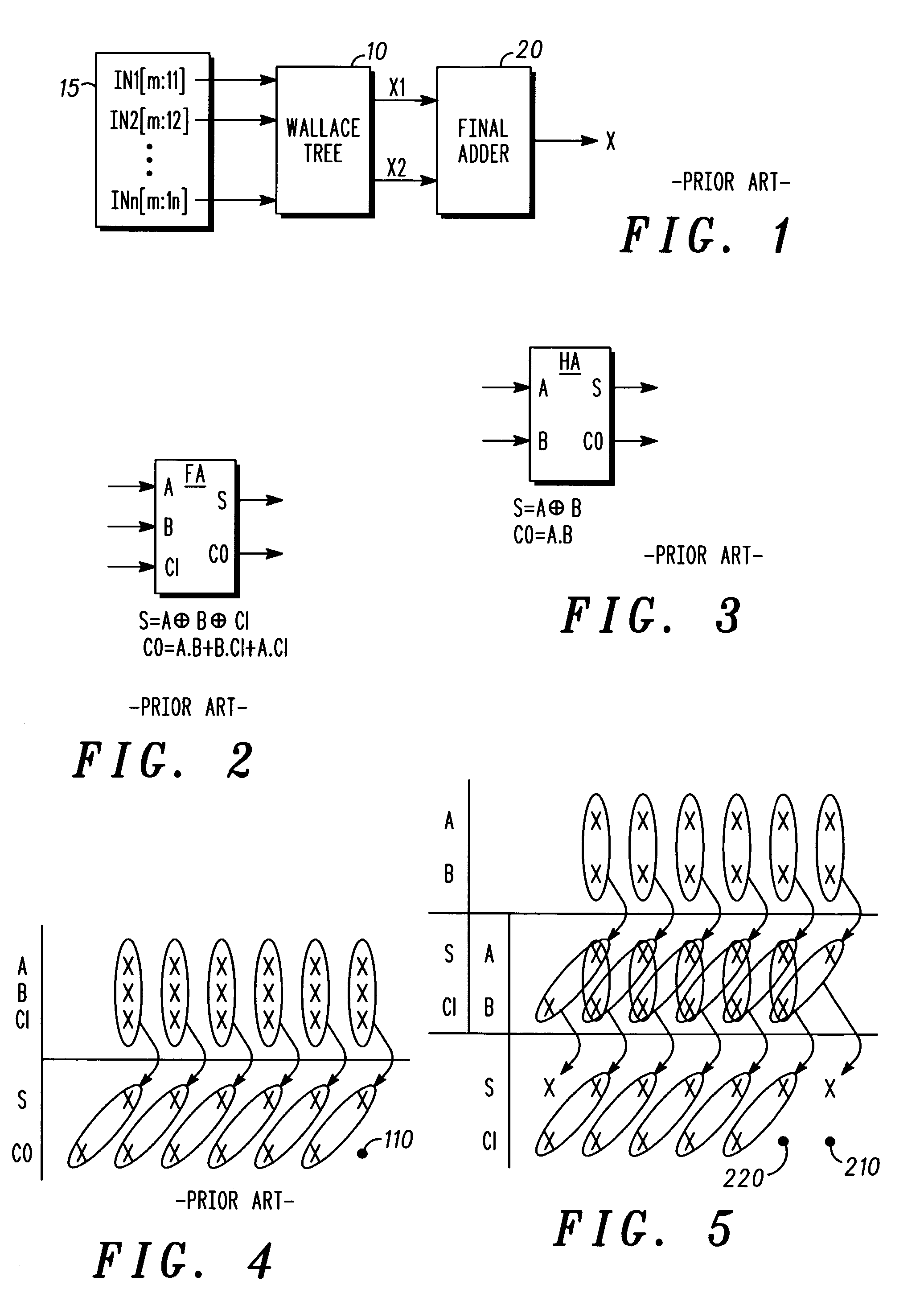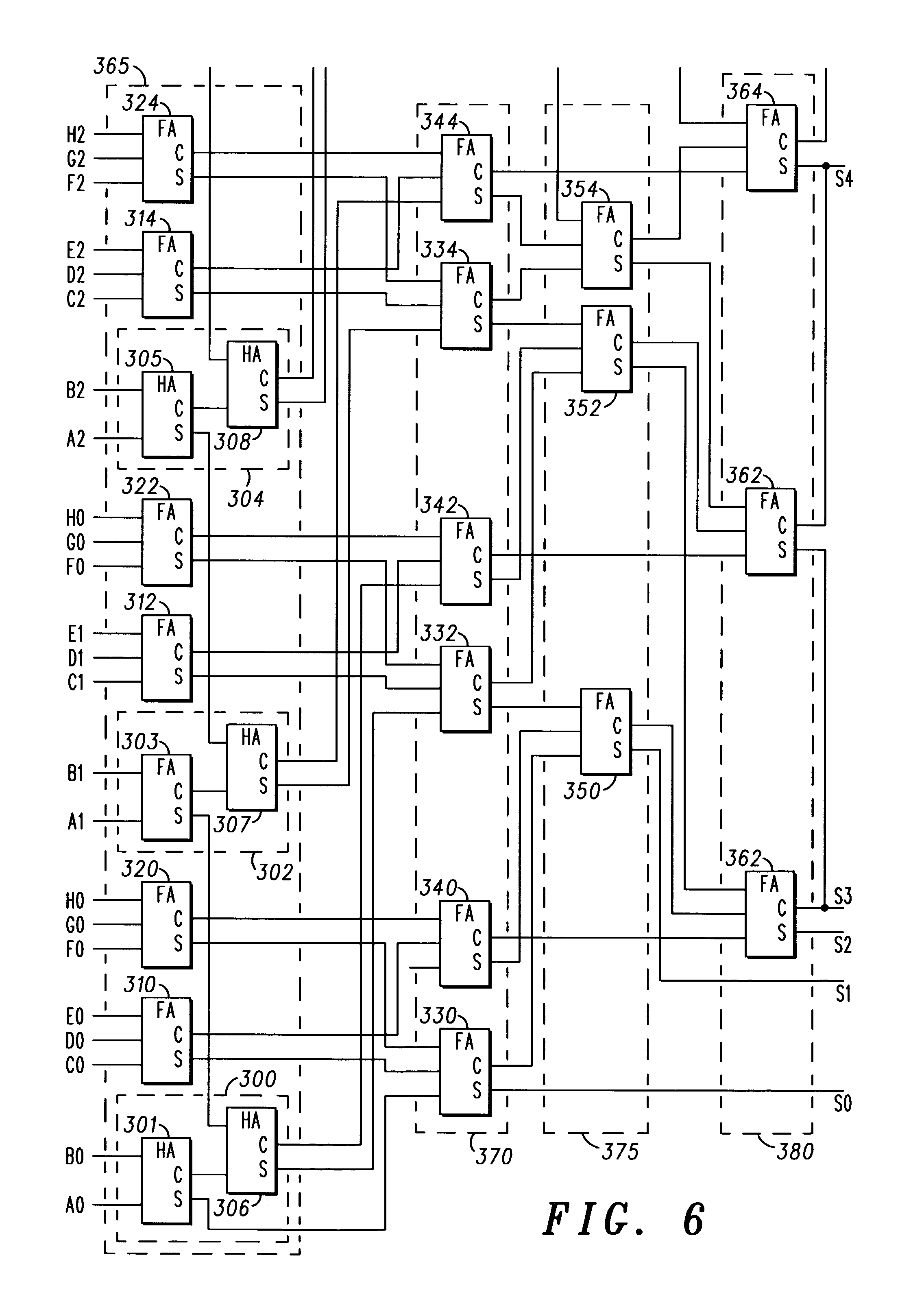Adder tree structure DSP system and method
- Summary
- Abstract
- Description
- Claims
- Application Information
AI Technical Summary
Benefits of technology
Problems solved by technology
Method used
Image
Examples
Embodiment Construction
[0024] Referring firstly to FIG. 1, a known vector adder is shown, using a Wallace tree 10 to sum up n number of IN vectors 15 (IN1[m:11] to INn[m:ln]), where m is the number of bits per vector and 1 is the lowest vector index (the least significant bit of the vector) having a non-zero value in each case.
[0025] The Wallace tree 10 comprises a number of stages, each stage composed of Carry-Save Full- or Half- Adders (FA or HA). A FA is shown in FIG. 2, and a HA is shown in FIG. 3. The FA takes three vectors A, B and CI (carry-in), and provides outputs S (Sum) and CO (carry-out). These are calculated as follows:
S=A.sym.B.sym.CI
CO=A.B+B.CI+A.CI
[0026] The HA takes two vectors A and B, and provides outputs S (Sum) and CO (carry-out). These are calculated as follows:
S=A.sym.B
CO=A.B
[0027] The Wallace tree structure reduces the summation process into intermediate stages. In a simple arrangement using only FAs, the ratio of input to output vectors will be 3:2 for each stage, leading to a red...
PUM
 Login to View More
Login to View More Abstract
Description
Claims
Application Information
 Login to View More
Login to View More - R&D
- Intellectual Property
- Life Sciences
- Materials
- Tech Scout
- Unparalleled Data Quality
- Higher Quality Content
- 60% Fewer Hallucinations
Browse by: Latest US Patents, China's latest patents, Technical Efficacy Thesaurus, Application Domain, Technology Topic, Popular Technical Reports.
© 2025 PatSnap. All rights reserved.Legal|Privacy policy|Modern Slavery Act Transparency Statement|Sitemap|About US| Contact US: help@patsnap.com



